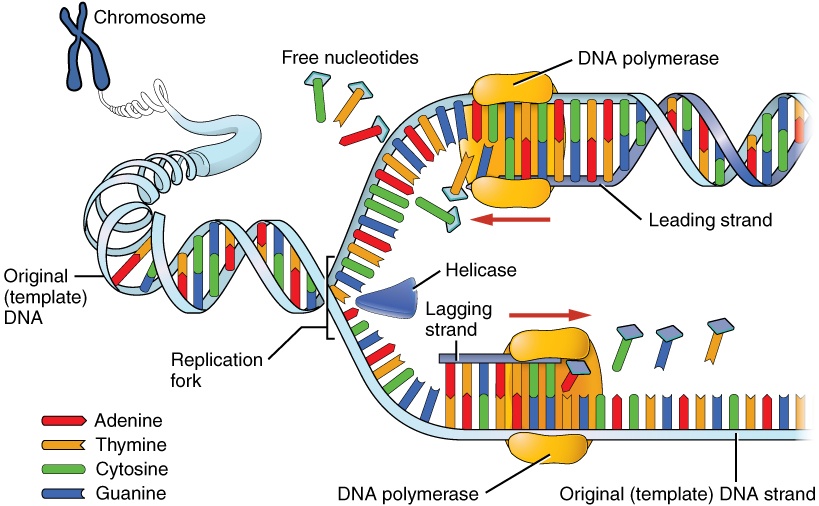D1.1.1 DNA replication as production of exact copies of DNA with identical base sequences
DNA replication involves making new strands of DNA with exactly the same sequence of nucleotide bases as the original strand.
Every time cells divide, the DNA must be replicated so that each of the new cells can receive the correct DNA.
Cell division happens in two common contexts:
- Growth and repair of tissues
- Reproduction
Q) What would happen to the DNA content of new cells if DNA was not replicated before cell division occurred?
D1.1.2 Semi Conservative nature of DNA replication and role of complimentary base pairing
DNA replication is semi-conservative (as discovered by scientists Messelsohn and Stahl).
This means that when DNA is replicated, 50% of the new DNA is actually the old DNA (semi- 50%, conservative – kept, or preserved).
This happens because in DNA replication:
- The two strands of DNA separate at a specific place, almost like a zipper (the place where they separate called the replication fork, and the hydrogen bonds between bases must be broken by an enzyme to make this happen).
- Free nucleotides in the cytoplasm make hydrogen bonds with the exposed DNA according to the complimentary base pair rules (A-T G-C, or adenine bonds with thymine, guanine bonds with cytosine).
- Enzymes help to build new strands which are complimentary to the original DNA strands (For example, if the old strand has A-T-G, the new strand would have T-A-C).
- The end result is two copies of the original DNA (each copy of the new DNA contains one original DNA strand and one new DNA strand).

Q) Identify on the image the two original DNA strands and the two new strands. Use this information to explain why DNA replication is semi-conservative?
D1.1.3 Role of helicase and DNA polymerase in DNA replication
Two enzymes play an essential role in DNA replication:
- Helicase – This ring shaped protein separates the original DNA at the site of the replication fork, almost like the zipper that unwinds and ´unzips the DNA´.
- DNA polymerase – An enzyme that assembles the new strands of DNA, using the original DNA strands like a template and forming new hydrogen bonds acdcording to the complimentary base pair rules (ex. adenine would join with thynine).
Both enzymes working together, together with the replication fork is collectively called the replisome, as this composes the machinary of DNA replication.





